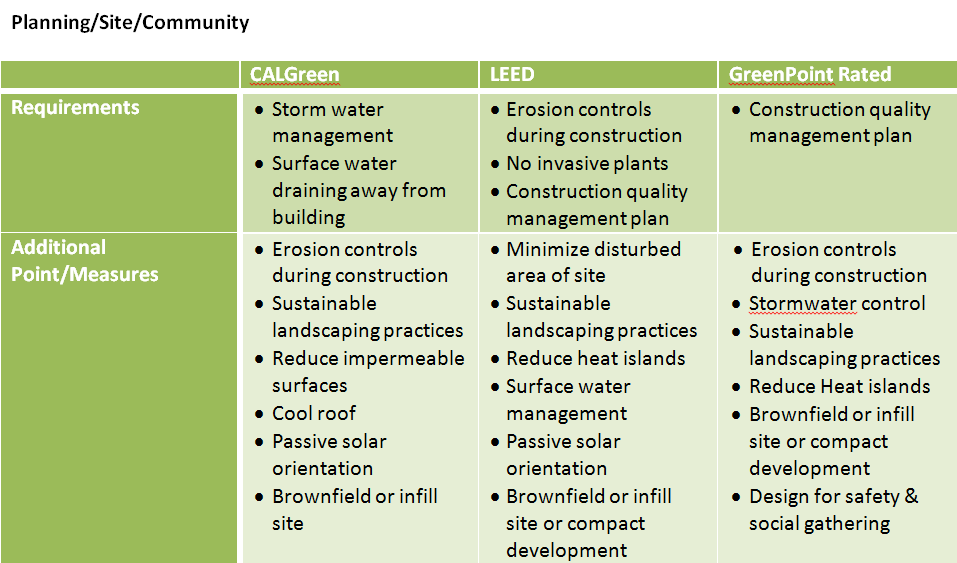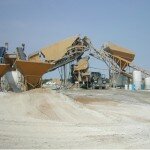|
|
January 6th, 2011
By Bridgett Shank

You’ve probably heard of LEED, (Leadership in Energy and Environmental Design), and maybe if you’re in California you have heard of GreenPoint Rated or the eminent CALGreen Code, but wrapping your head around how these standards compare and what they mean to your building project can be a big task. In this article, I’ll try [...]
October 28th, 2010
By Ross Levy

There has been a lot of discussion recently about fly ash in concrete as there are concerns about heavy metals in this by-product of coal fired power production. “Replacing Portland cement is a high priority for all of us…” Russell Perry, Smith Group. “The Environmental Building News” (Alex Wilson) continues to support the use of [...]
March 5th, 2010
By Bobby Markowitz

With so much buzz surrounding the modern green movement - grant money, tax credits, and an ever increasing market demand - there is an important question of the associated role of water and where it stands. Energy, for the most part has been a topic that has elicited an enormous political response, especially, at the federal and [...]
December 14th, 2009
By Marian Keeler

Green Building Practitioners are noticing three trends that, while not new concerns, truly speak of the momentum gathering within the sustainable design movement. One is the issue of water scarcity, second is the issue of environmental chemicals emitted by and residing in our built environment and third is the interest in adding the component of [...]
November 30th, 2009
By Laura Allen

It’s Saturday morning laundry time. The washer spins and shakes, clothes are cleaned while the dirty water flows outside to irrigate fruit trees. There’s something satisfying about this simple shift: a slight change in a mundane chore has reduced water consumption, taken a load off the sewer treatment plant, promoted food security, and saved time [...]
November 17th, 2009
By Nabih Tahan

Grant Street house Most buildings leak air, and therefore heat, through cracks in their building envelope. We get cold in our leaky buildings and turn up our heaters to keep warm. The heat continues to leak out, and we continue to turn up our heaters, and on and on the cycle goes. In the end, [...]
November 5th, 2009
By Nabih Tahan

photo: Binder Holz The San Francisco Bay Area is rich with examples of Green Architecture, and is arguably on the forefront of the green building movement. Many people here have heard of the Passive House Standard, but not many really know what it is or how it works. In essence the term “passive house” represents [...]
September 18th, 2009
By Michael Heacock

As architects, we weave the complexities of program, design, regulations, technology, budget and fee, while managing clients, projects, and liability. Proposed changes to our workflow frequently interrupt our momentum. Changes to our design process that seem burdensome ultimately transform our work and improve our buildings. The process of commissioning is new to many of [...]
April 29th, 2009
By Paul Kephart

It has become increasingly clear that the design and building of living roofs is making a transition from early adoption to mainstream application. Driven by environmental policy, economic necessity, and social responsibility there is increasing emphasis on a “living systems” approach to building and vegetation design. The designs integrate and complement mechanical and plumbing [...]
April 25th, 2009
By Brendan Connolly

My first exposure to waste diversion on a jobsite was a response to LEED requirements. Of all the standards we had to meet, practices we had to modify, and requirements we had to satisfy waste diversion presented the most tangible upside – across the board. It’s obvious, too. Once you have modified your waste handling [...]
|
|












Most Popular